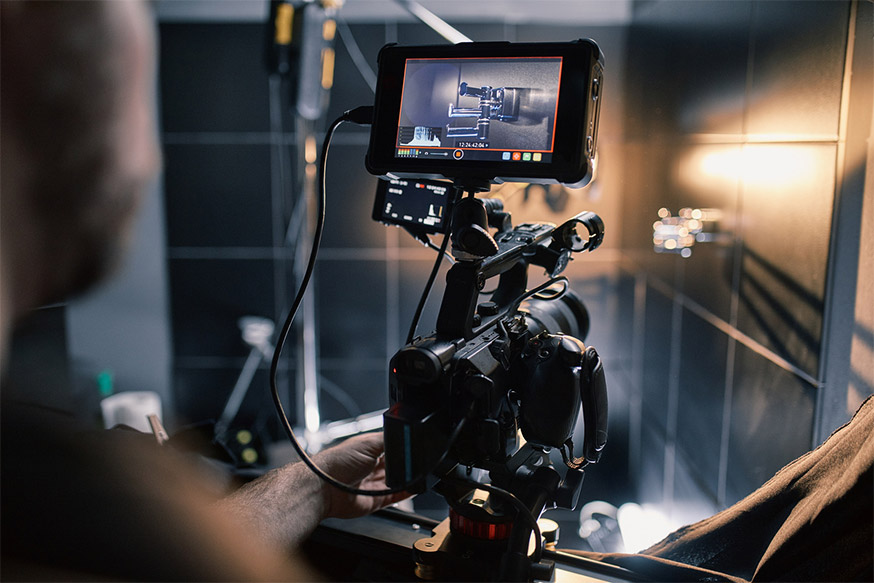MadLad was honored to be selected as the producer, film crew, and creative team behind the Darius Rucker Renovation reality series, entitled “Rucker’s Reno.” With so many lessons learned, it is a piece of history that we are very proud of.
How they got the gig
We were one of many production film companies that bid for a new show involving Darius Rucker. The premise was to mimic other “reality” shows and follow the renovation of Darius’s remodeling step by step. Our pitch, however, differed from the cliche of falling-down walls, broken schedules, and the chaos that comes with both construction and maximizing the drama created behind the scenes.
Our vision was different. We wanted to put a more “real” and human reality to the Darius Rucker renovation. We not only live in Charleston; we adore it. This is our home. Traditionally, race relations and inequality in the South, especially in the Charleston area, have been misconstrued in the media and culture as a relationship that is tense and callous.
Our experience has not mimicked what we see, which is what has been accepted as the truth, in our community. We thought that it was time to have a real conversation about the past, the present, and the future, even if it was uncomfortable. Our mission was for the Darius Rucker show was to open the dialogue that we so desperately needed to discuss in a less confrontational and controversial way, while showcasing the city of Charleston and many of the components that make it one of the most sought after destinations to live
The main reason we were chosen was that we pitched a different, more creative style show that didn’t keep viewers in the house with construction taking place. We wanted to entertain and educate viewers WHILE the construction was taking place… temporarily transporting them into the world of Charleston that Darius and us both love.
They were chosen, and production began. Then COVID hit…
As with the rest of the world, filming, gathering, travel, and the entire entertainment industry was not just challenged by the pandemic; it was basically shut down. Not only were we dealing with the inability to gather and work as we did before; the construction industry experienced a chain line supply issue that had us waiting on materials for days, sometimes weeks on end, and a whole lot of “white” space to fill in.
What seemed like a curse to production at the time ended up being a blessing, because we were able to take the time to get authenticity and focus on things outside of just the construction and renovation of an old house. We were able to showcase restoration, renovation, and remodeling of the beliefs that many people hold of social issues, and our history as a nation relating to slavery, and take the time to examine everything in a new, and hopefully forgiving, light.
The concept
The original concept of the Darius Rucker home renovation show was to be like all the other renovation shows, but we wanted it to be more than that. Our idea was to get past the same old tired “reality” show and add various adventures alongside the renovations. We wanted to be the influencers who brought cultural diversity to the forefront, and for people outside of Charleston to see what really makes Charleston so truly amazing.
Why was this particular home chosen?
The house was chosen because it was a home that had a history of slavery. It was a home that was purchased and owned by a known slave owner in South Carolina, and we felt that part should not be skirted over or overlooked. Our mission was to make it a big component of the show itself. Darius wanted us to showcase all of the many things within the house that were a testament to the slaves in the South and how talented their craftsmanship was.
We didn’t sweep it under the rug; instead, we showcased everything from handcrafted ceilings and fireplace mantles to the amazing finishing touches that were created by slaves. Darius actually owned the house before the concept of the renovation began discussions, and he wanted to make sure that it was used to bring a national conversation to light.
Was the show scripted?
We guided the narrative with key points and topics, but it was often only a starting point to really confront Charleston’s past and have a meaningful conversation as it naturally happened. This made the show more real, more authentic. We intentionally went from room to room, episode by episode, pointing out every little thing that was unique and the cultural significance behind it. Most home renovation shows are focused on the “after,” but we focused on the “journey.”
How they organized the show and episodes
While most home renovation shows focus on the drama behind the house build, we made sure to have every episode open with a room of the house, pointing out its significance, and then we would take the show on the road to have a meaningful “field trip” with Charleston locals, a location, or something that was relative to the the room and its history.
There were many design and architectural dilemmas, but at the heart of it were the dilemmas of our history as a nation, as Southerners, and the racial inequities that we are still talking about and attempting to tackle.
Who chose the people to be interviewed and included?
We conducted an original interview with Darius and from there we chose who, where, and when we got them to sign off on and who we chose using our intimate knowledge of the city. The Design Network gave us a lot of liberty and thankfully trusted us to schedule and conduct the cultural outings, and really allowed us free reign on the topics and angles we wished to cover. A lot of it was guided by Darius, who is from Charleston and already had respected and interesting connections in the community that he felt were important to include.
What happened that you weren’t expecting?
Hands down, home renovations during the pandemic! Things like shipping supplies and the limitations posed by social distancing. Where most home renovations take about four to five months, ours took 14 to 15 months. We were able to work around the pandemic protocols, but it took a lot of shifting and readjusting.
Through it all, we basically operated with a skeleton crew (2-5 to be exact) where which at the time felt super chaotic. But looking back, it allowed us to maintain more control, it helped the cast feel more comfortable which allowed them to be authentic, and we got to really know Darius pretty well.
What was your favorite part about filming?
The editing was NOT our favorite part haha. It had to be done on a hard time crunch, having to get six 30-minute episodes in just about three weeks. We had to make it work, which took 20-hour days and a lot of commitment. But the best part really was watching people’s faces as they viewed the finished product. Along the way, we got to network with people and rub elbows with many new contacts in Charleston.
It was also cool to learn about the history of the house. We were in the living room having tea at the neighbor’s house (the Rutledge Inn) and found out that George Washington had stood right where we were centuries before. The biggest payoff was that we achieved what we set out to do: accurately reflect Charleston, the melting pot with a checkered past, but the thing about it is that you don’t hear all the good stuff. This was a good cultural show that exhibits people working together and debunking a lot of the rumors about Charleston.
We became a tight-knit family learning so many new things. We also developed a true admiration for the slaves who had hand-built many parts of the home and gave it their all. Things were handmade and hand-cut, and it really showcases how much of themselves they put into putting the house together.
What were the greatest lessons you learned?
The biggest lesson we learned was that there were a lot of things that we could have faked and drama for drama’s sake that we could have put into the script, but we didn’t. And the outcome was that we made something that shines with authenticity and historical significance.
We held true to our concept and didn’t give in to adding drama to keep people engaged. We know they’ll enjoy the entertaining and interesting content we didn’t create – rather, we captured it.
On the technical side, working with a small crew during COVID was a make-it-or-break-it type of situation that might have seemed like a bad thing while going through it, but in the end, it is what made the show stand out.
From lighting fixtures to drywall, the supply chain issues were painstaking, so we were forced to fill time – but not just with fillers, with real value. There was a huge rush at the end to keep up with the necessary production, but it was that intense focus and drive that we believe is behind how well it turned out.
We hope that you will tune in to see the finished product. Going forward, we will take all the valuable lessons we learned and put them to good use for our customers in the future.



